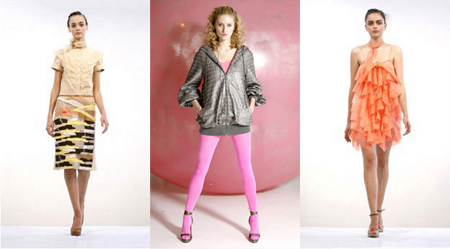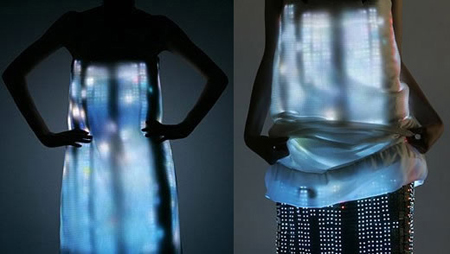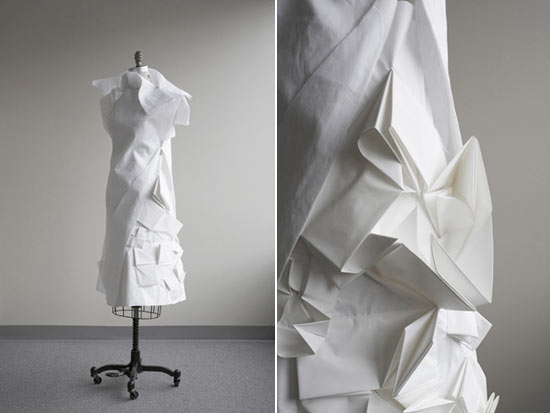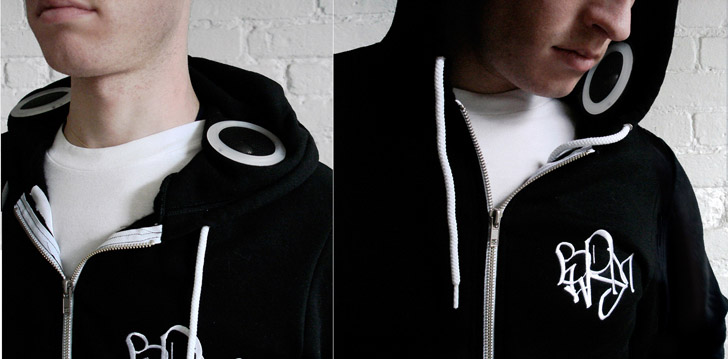 Fashion designer Angel Chang combines technology, data visualization, and narrative in a unique way that influences the aesthetics and function of her fashion collections. She's been experimenting with color-changing inks, 3-D images, iPod clothing, and light-up gear in her recent fashion lines to help tell stories about her garments.
Fashion designer Angel Chang combines technology, data visualization, and narrative in a unique way that influences the aesthetics and function of her fashion collections. She's been experimenting with color-changing inks, 3-D images, iPod clothing, and light-up gear in her recent fashion lines to help tell stories about her garments.
"I think of all the ways my generation of women are different from previous generations: we're working more, traveling more, dependent on our cell phones, hooked on the Internet, and obsessively checking our e-mail. In short, we are more mobile and heavily depend on technology for all the things we do in our daily lives. My aim is to show that clothes can actually do something -- beyond just looking good; they ought to facilitate and improve the way we live." she says.
She uses technology in many ways to create textiles for her garments. In her Spring 2008 collection, she uses a variety of mapping data that she visualizes and turns into textile patterns. For example, this dress uses maps of battlegrounds that she prints using 3D and embroidery:

Chang collaborates with technologists to integrate smart materials and technology into her garments. The below dress from her Fall 2007 collection shows integrated circuitry for an iPod.

Chang also uses smart materials as narrative. In the below dress, she uses thermochromatic inks that disappear when heat is applied to them to tell a story about the history of military camouflage.

More info via AngelChang.com
 Textile designer Yun Ding has created Aqua Chameleon, a line of delicate-looking swimwear printed with smart pigments such as thermochromatic and photochromatic ink that change patterns based on certain conditions. The patterns gradually shift from a geometric print into a decorative pattern by reacting to temperature, sunlight, or water conditions. These "swim costumes" challenge our notion of how a garment should function aesthetically by adding dynamically changing patterns based on the changing environment around us and displaying it back for all to see.
Textile designer Yun Ding has created Aqua Chameleon, a line of delicate-looking swimwear printed with smart pigments such as thermochromatic and photochromatic ink that change patterns based on certain conditions. The patterns gradually shift from a geometric print into a decorative pattern by reacting to temperature, sunlight, or water conditions. These "swim costumes" challenge our notion of how a garment should function aesthetically by adding dynamically changing patterns based on the changing environment around us and displaying it back for all to see.






